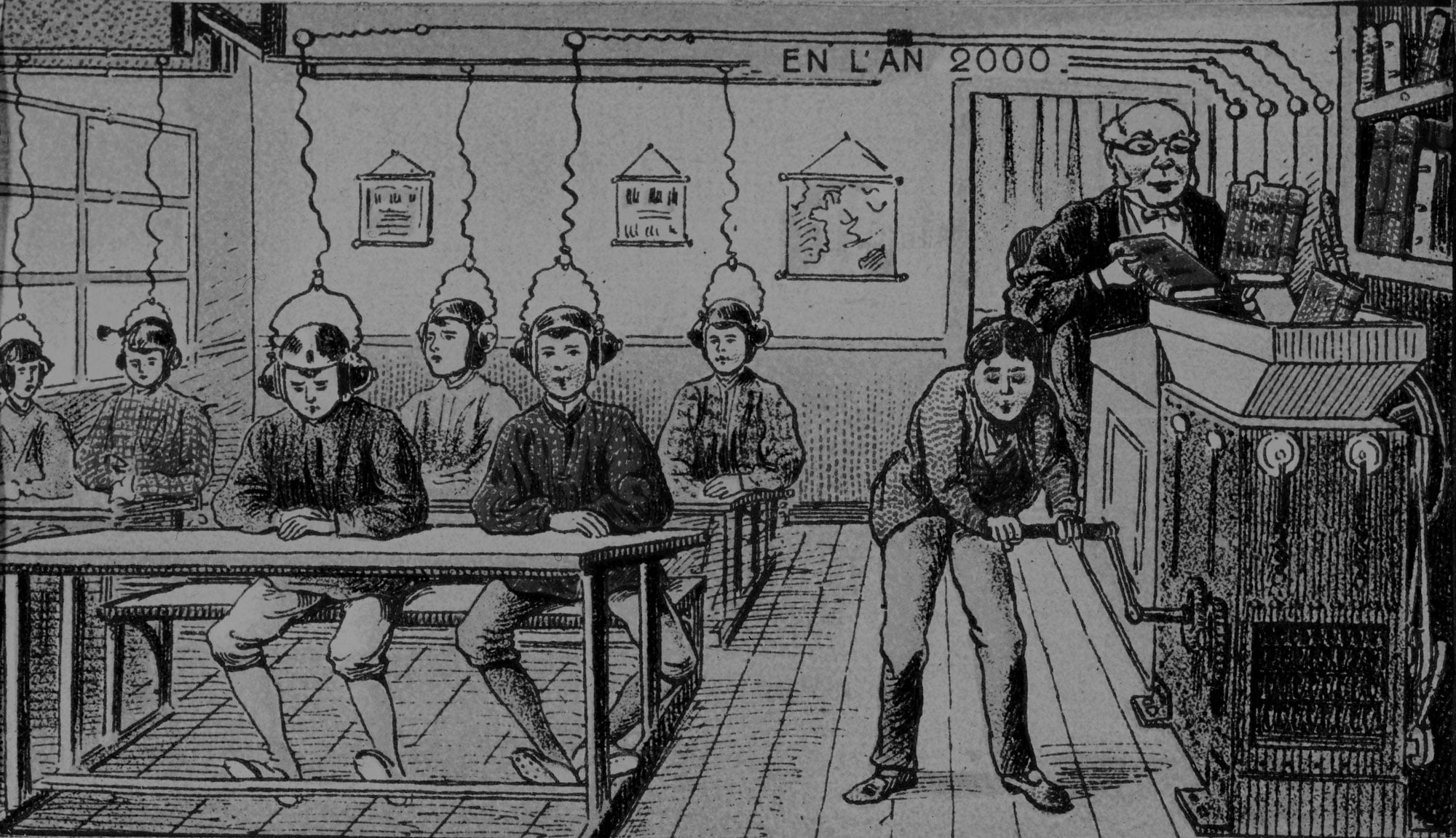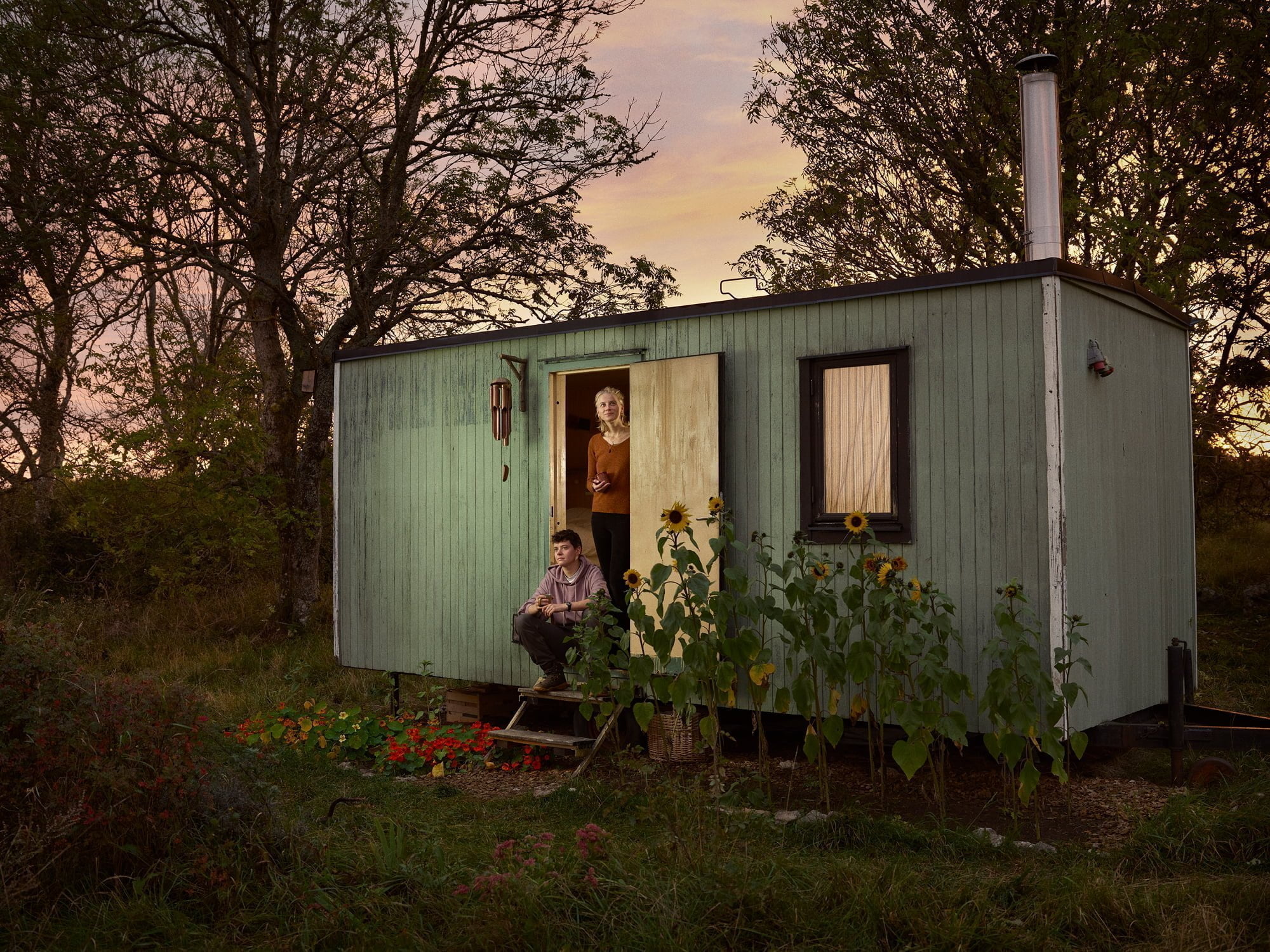People have always looked to the future and wondered how new technologies will change our lives. Here are 10 futuristic visions from the 19th and 20th centuries – some of which remain in the realms of fantasy, and others of which feel strangely familiar.
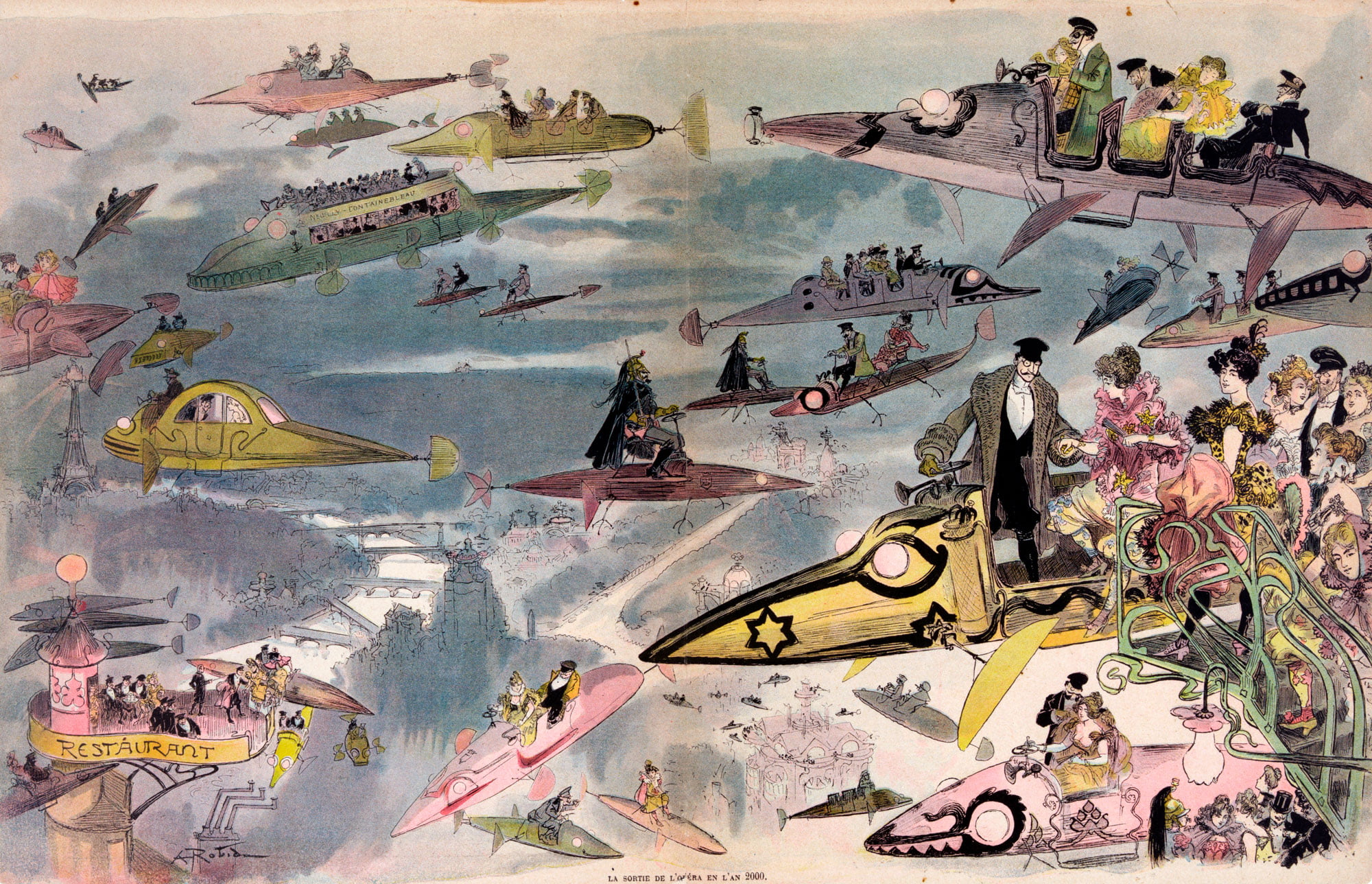
The skies above Paris
The future of luxury transport: as seen in 1882. This engraving by French illustrator Albert Robida is titled “Leaving the opera in the year 2000”, and shows dozens of flying machines – including private vessels, taxis and buses, buzzing over the rooftops of Paris.
With aircraft designs inspired by sea life – including a whale-shaped bus – the sky has the look of a giant aquarium.
In some ways Robida’s vision is hyper-modern – women get to pilot their own craft, for instance. But at the same time, the attire is very much of the 19th century, and the flying police officers carry swords.

The flying postman
The potential of human flight was a major preoccupation of turn-of-the-century futurists. It’s true that aviation has transformed our world, but the kind of body-worn flight equipment and “flying cars” that fired imaginations a century ago, remain in the future.
This 1899 illustration of a flying postman by the French artist Jean-Marc Côté is one of a series produced for cigarette cards and postcards, imagining life a century later.
One major innovation that the minds of the past often failed to imagine is the internet and modern wireless communication. For instance, in today’s world, the flying postman shown here would probably be out of a job, thanks to plain old email or, failing that, drones.
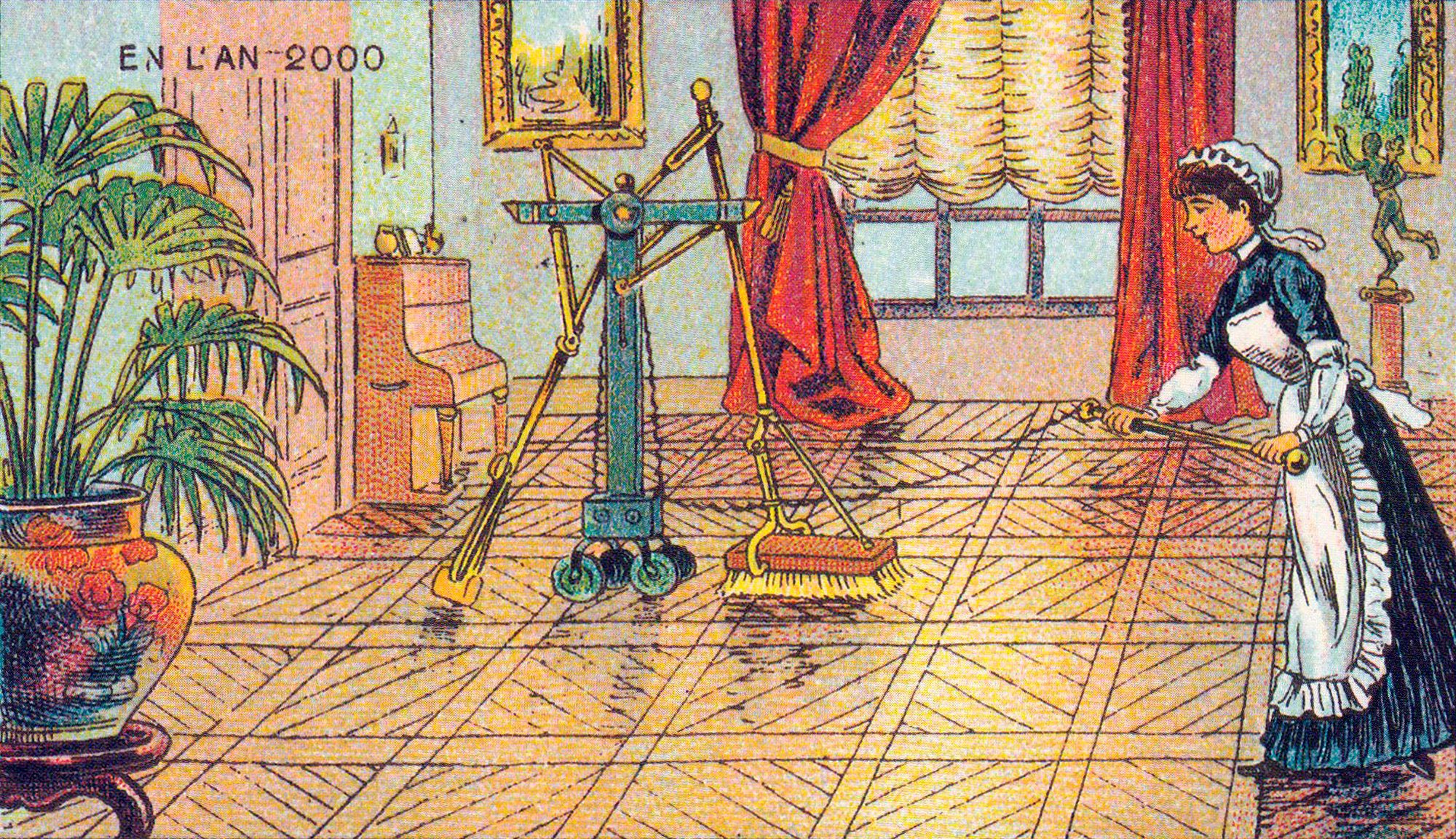
The electric floor cleaner
This 1899 vision of a mechanical floor cleaner (or “electric scrubber”, as it is described) correctly predicts the demand for this type of labour-saving device. However, it didn’t see the coming of the vacuum cleaner, which was invented just two years after this illustration was made.
The idea of autonomous robot vacuum cleaners – now a reality in millions of homes – was also, apparently, beyond the imaginations of the late 19th century.
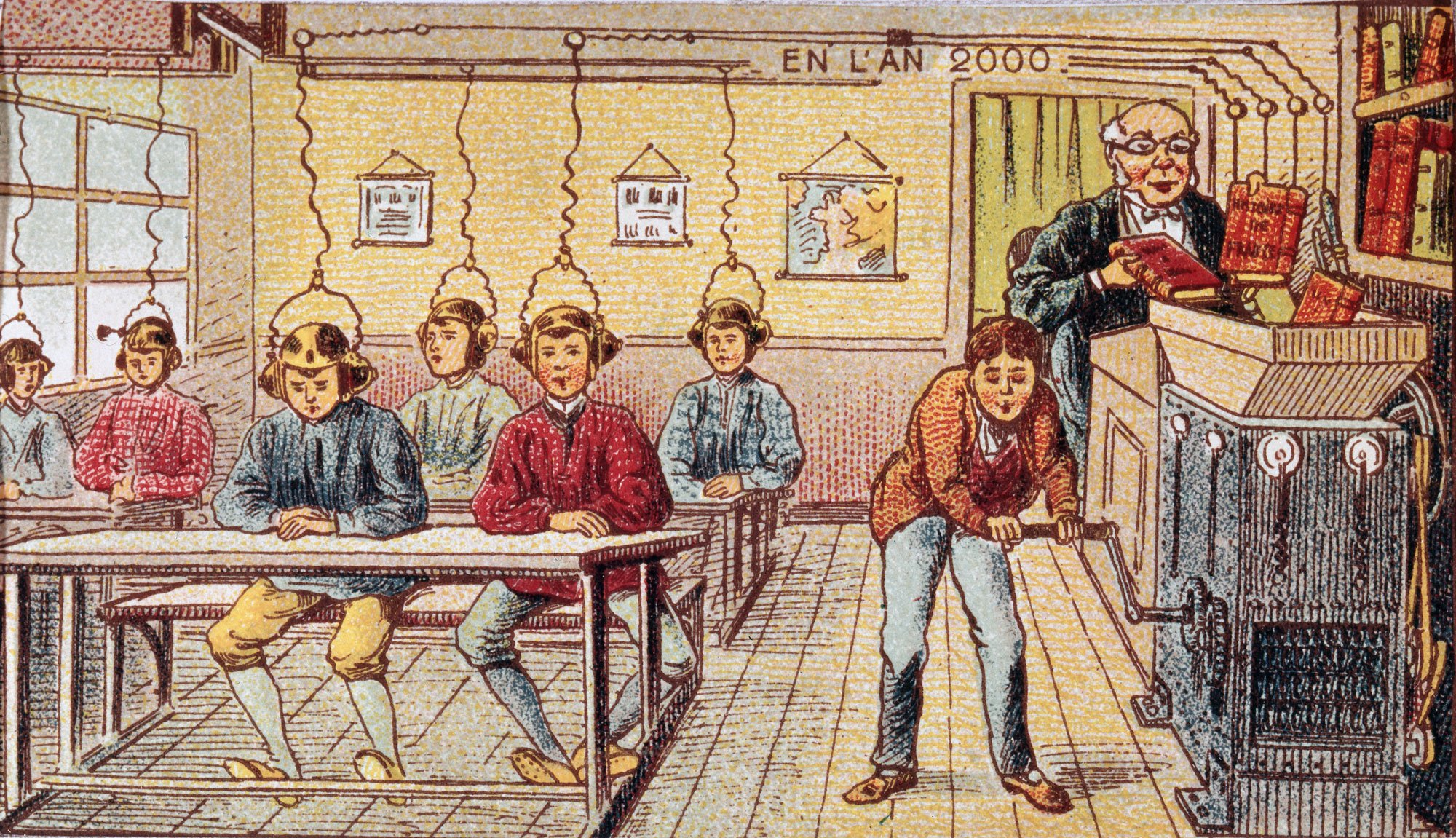
Learning by machine
Teaching was set to become a pretty easy job by the year 2000, according to this prediction from 1901. The schoolmaster simply feeds history books into a machine, while an assistant (or perhaps a pupil making amends for bad behaviour?) turns a crank, sending the content of the books, somehow, through wires to the headsets worn by the pupils, and thence, somehow, into their minds.
It’s an image that raises a number of questions. Not least, why does the schoolmaster even need to be there?

Image: Internet Archive

Image: The Novak Archive
Telephones with pictures
2020 has been the year of video calling. But the arrival of the technology was predicted more than a century ago.
“Numerous inventors have busied themselves trying to invent an apparatus or machine whereby it would be possible for one person to see another while talking on the telephone,” reported Electrical Experimenter magazine in 1918. “But so far nothing practical has resulted.” Such a device would naturally be called the “telephot”, the magazine’s writer reasoned, and was bound to be invented sooner or later, since “everybody would wish to have such an instrument”.
The description of seeing and hearing a faithful likeness of a distant friend “whether he is only five blocks away or one thousand miles” is pretty accurate, for 1918.
Another article in Practical Electrics magazine in 1924 predicted a similar device, with moving images so lifelike that you could use it to conduct a hold-up.
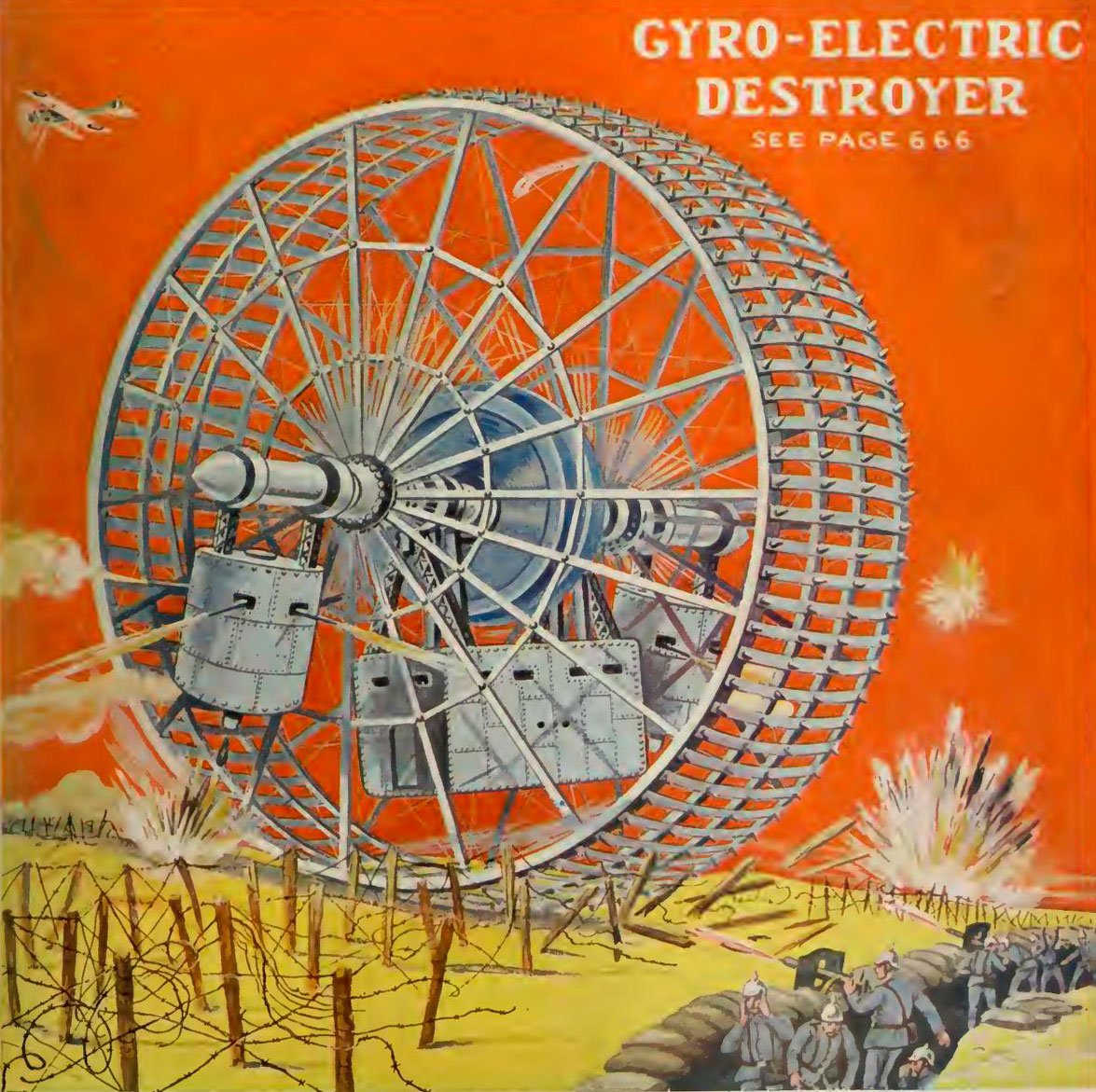
Image: Internet Archive
The wheel of destruction
During the First World War, periodicals dedicated to technology were packed with ideas that it was hoped could bring an end to the long conflict.
One such invention was the gyro-electrical destroyer – a sort of huge, wheel-shaped tank. As the Electrical Experimenter reported: “This 45-foot monster is steered by a large gyroscope wheel… The destroyer runs at a speed of from 40 to 60 miles an hour and due to its huge diameter it rolls with ease over trenches and other obstacles.”
The contraption was the brainchild of the magazine’s editor, Hugo Gernsback, which perhaps explains why it appeared in issue after issue, with Gernsback replying to letters from readers who questioned his design.

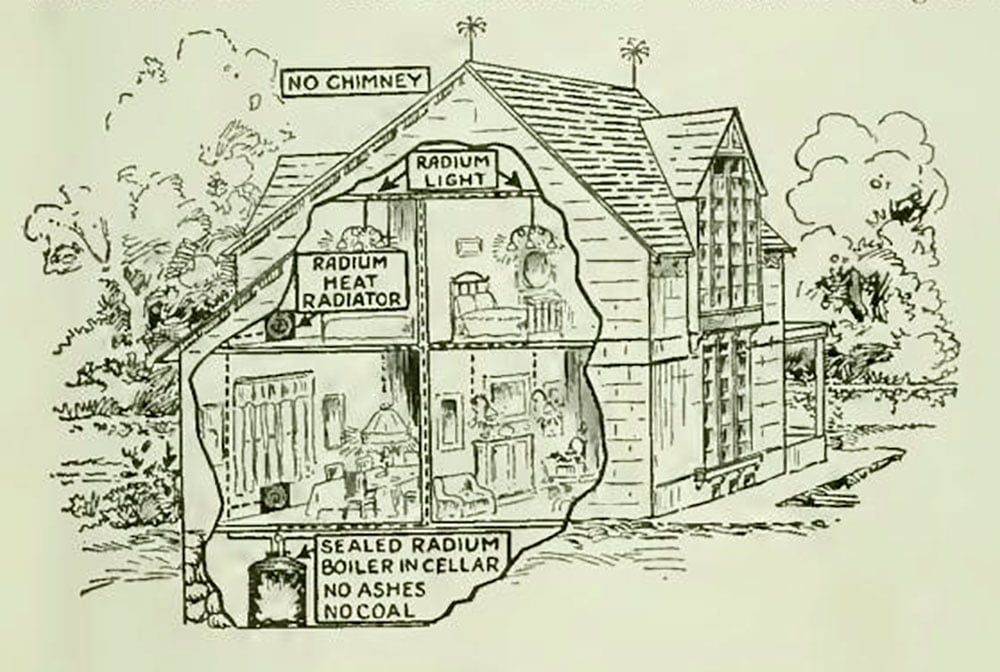
Images: Internet Archive
Fear of global freezing
Among the questions bugging scientific minds in 1919 was whether human activity could adversely affect the earth’s climate. That’s right: they were worried about global freezing. This concern arose from the new interest in extracting radium from the ground, as an alternative way of generating heat, as supplies of coal and oil were used up.
Electrical Experimenter reported that “radium power, light and heat for apartment and dwelling will seem as much of a commonplace to those of future generations as soft coal furnaces seem to us”. On the other hand, “man must not remove too much radium from the earth or the earth may freeze to death”.
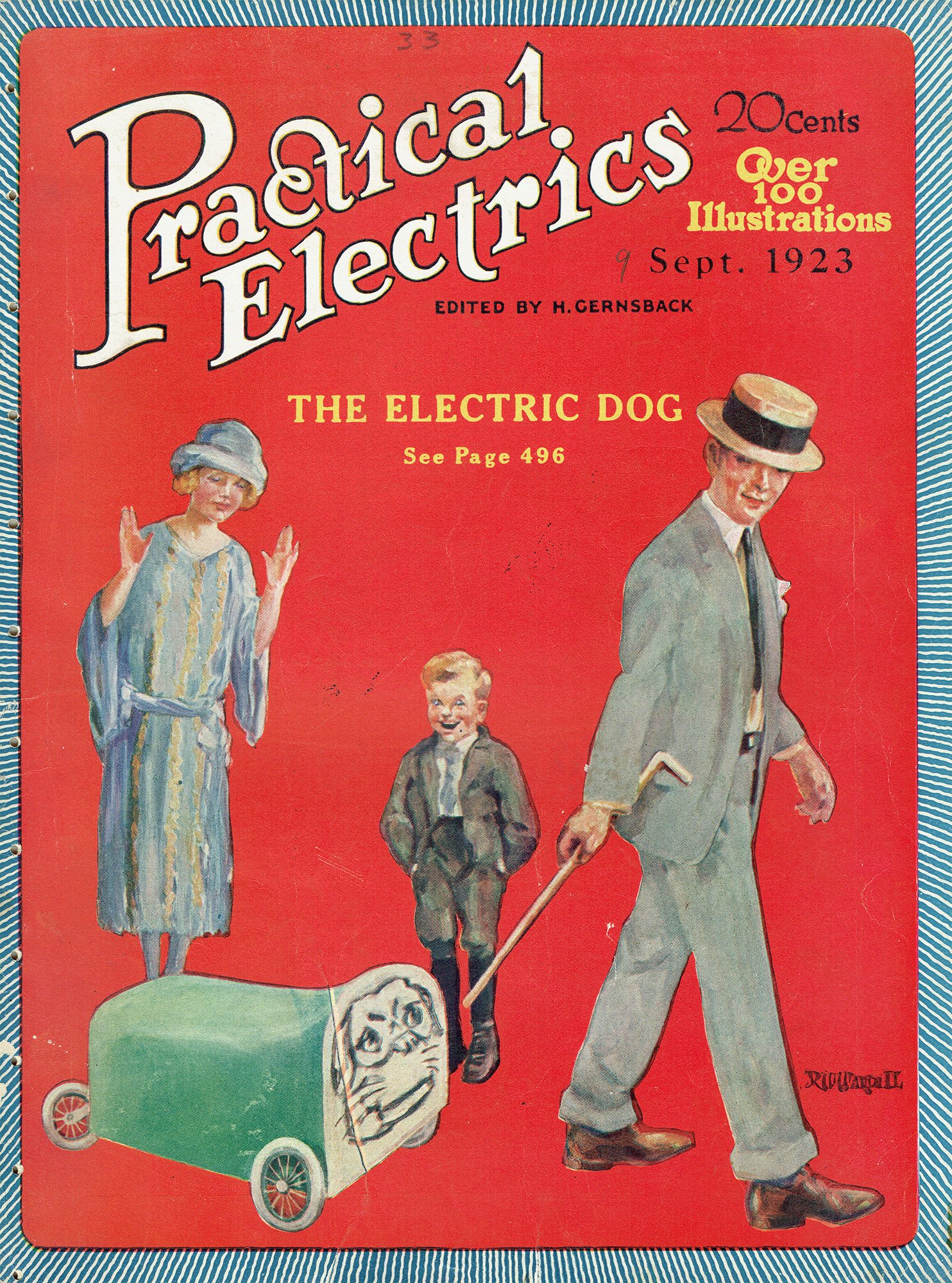
Image: The Novak Archive
Man’s best – electric – friend
This vision from 1923 predicts a robot canine companion that readers can construct for themselves. It’s fairly simple: a battery-powered rolling contraption that uses a magnet to follow a metal cane. It may have a cute face, but don’t expect this dog to roll over, play catch or seek help if you fall ill.
The idea of artificial pets doesn’t seem so outlandish nowadays, but beyond a few early adopters of mechanical companions, it’s a concept that exists mostly in the realms of cyberspace, exemplified by digital home assistants and AI-powered video game characters.
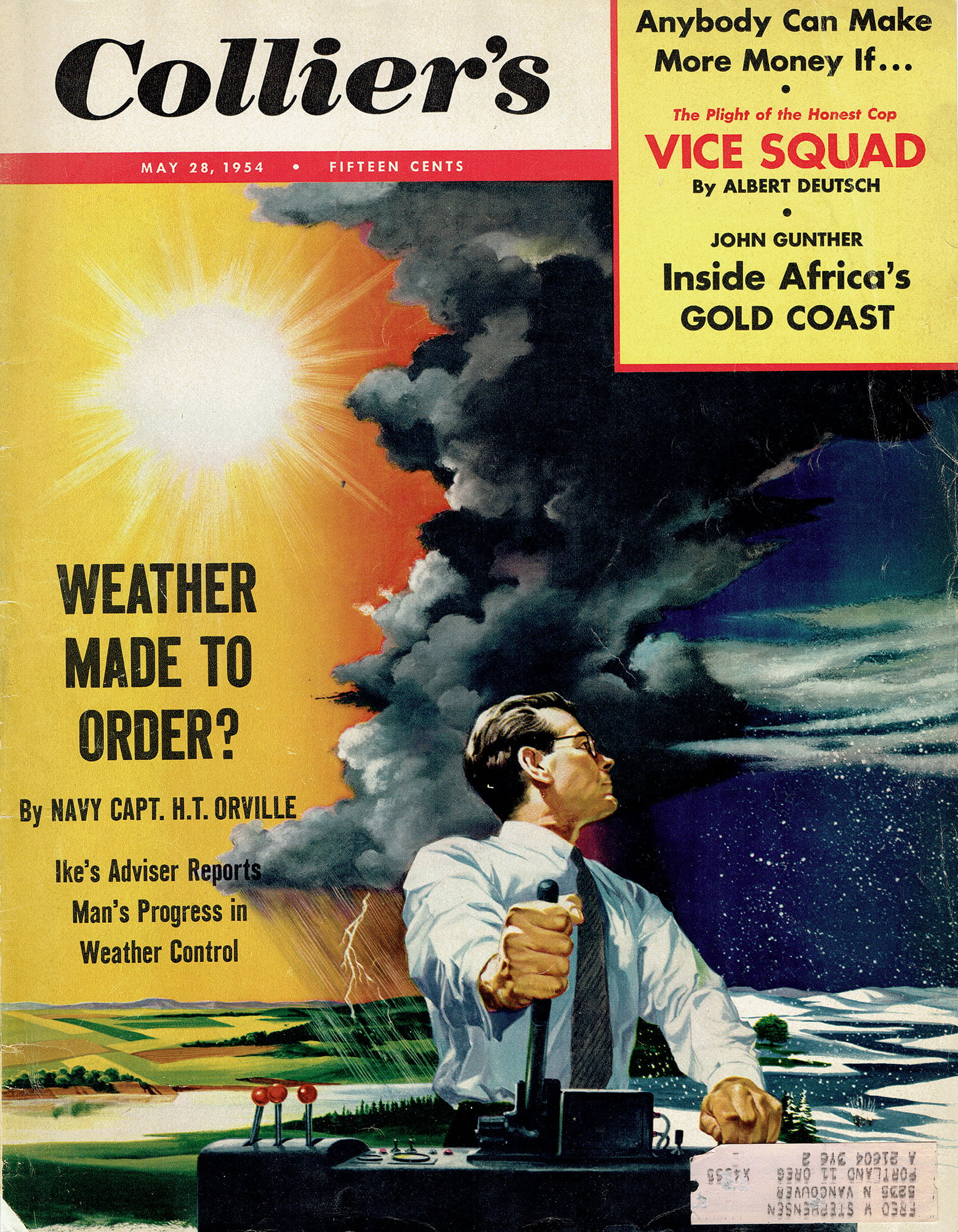
Image: The Novak Archive
Controlling the weather
This dramatic magazine cover from 1954 shows how people of the future will be able to control the weather. The article describes a plane being dispatched to dissipate a cloud that risks forming a tornado. “In this age of the H-bomb and supersonic flight, it is quite possible that science will find ways not only to dissipate incipient tornadoes and hurricanes, but to influence all our weather to a degree that staggers the imagination,” the magazine reports.
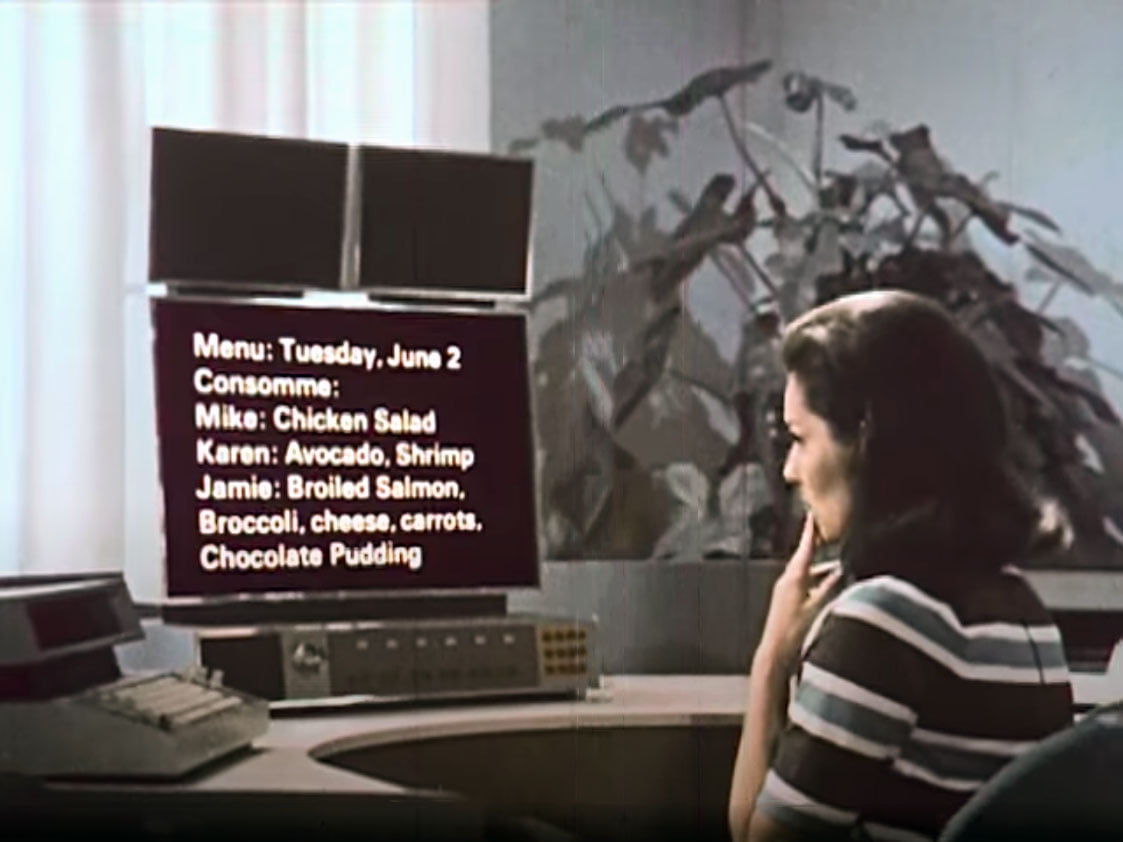
Image: YouTube
Meal planning by computer
In 1967 the electrical goods maker Philco-Ford produced a short film called Year 1999 AD, imagining how its future products might transform the typical home. The family in the film are the lucky owners of a space age car, a huge wall-filling TV, and a vast home computer that helps the family (more specifically, the mother) plan meals. We also see her husband using the computer to check the bills for the clothes she bought online. While the technology was futuristic, the gender politics is resolutely 1960s.
More from 5

What are carbon offsets?

